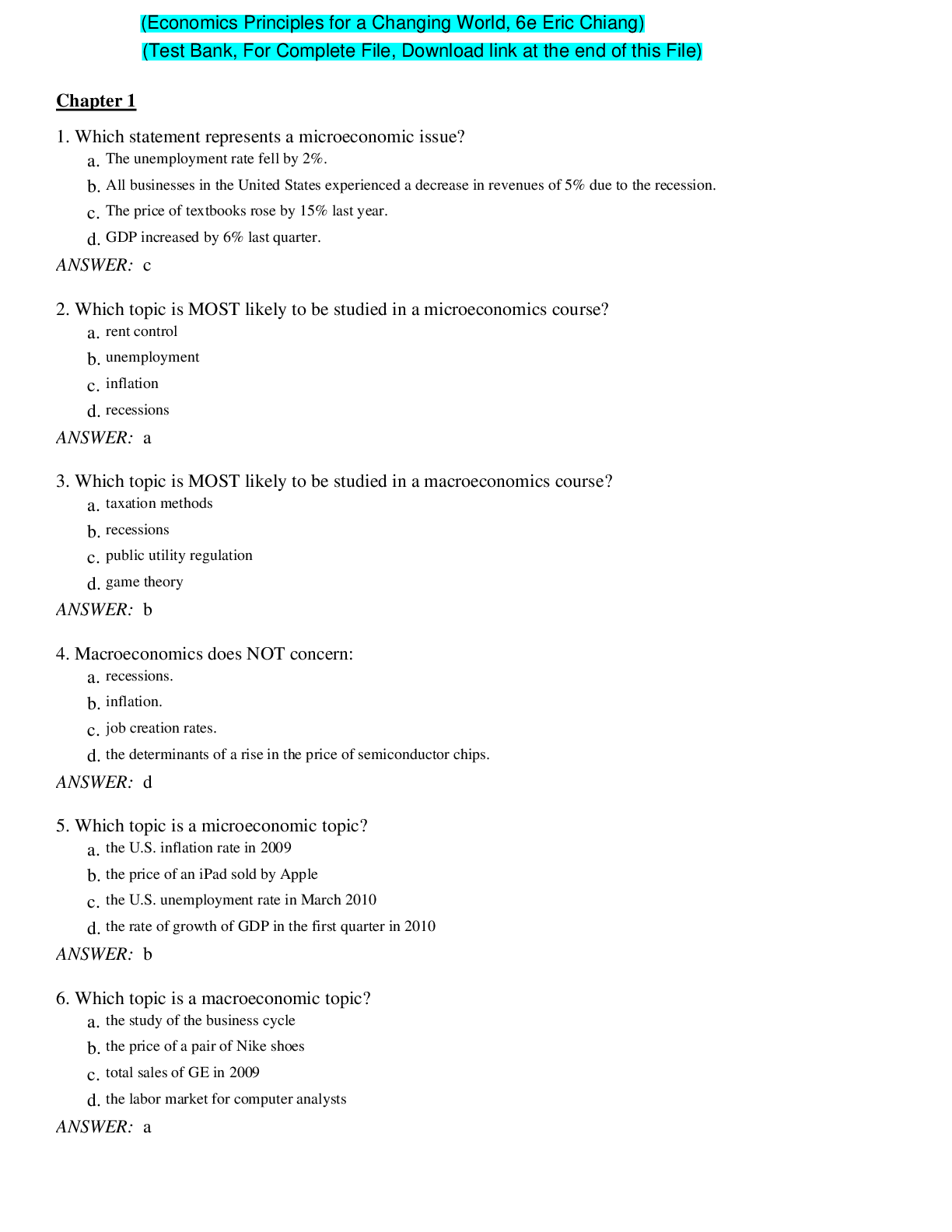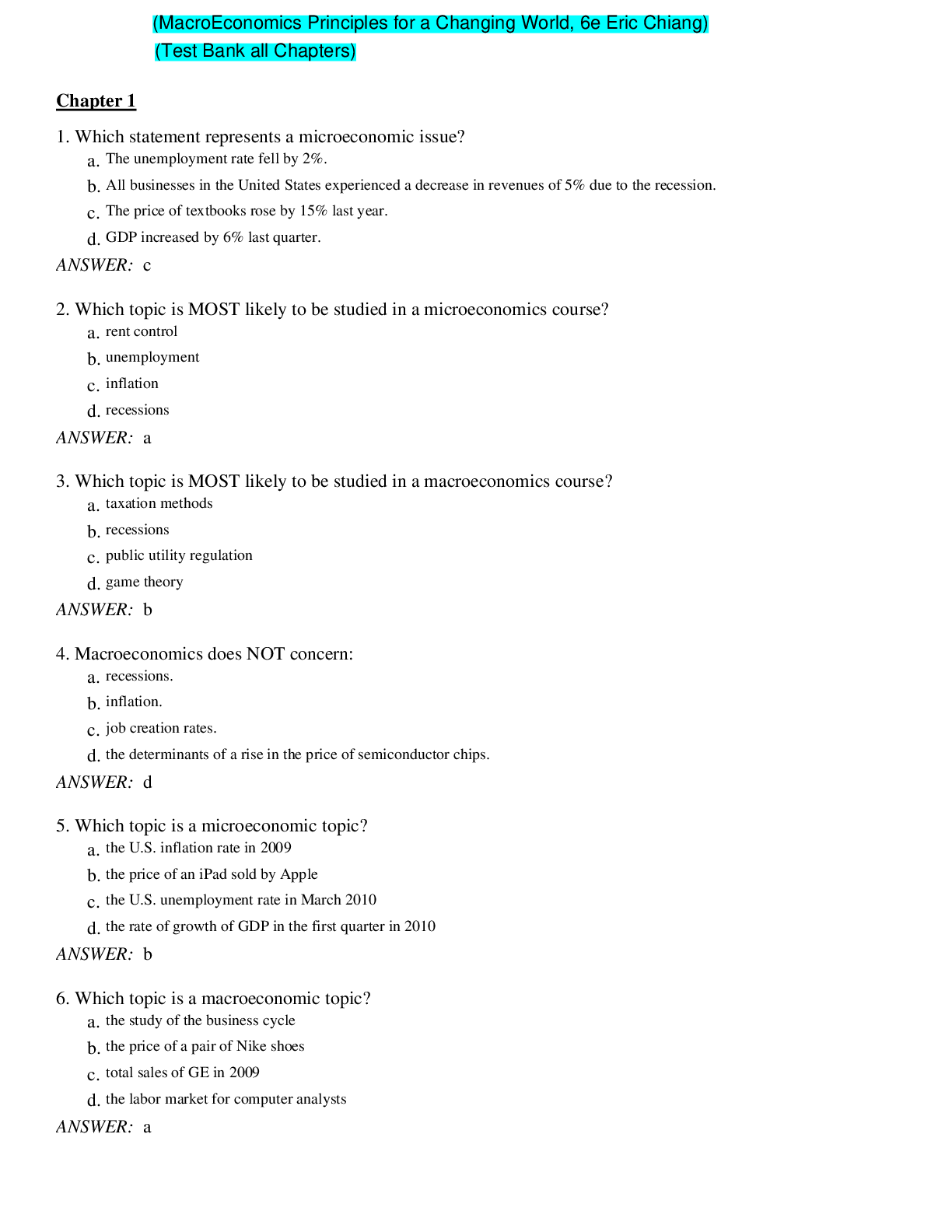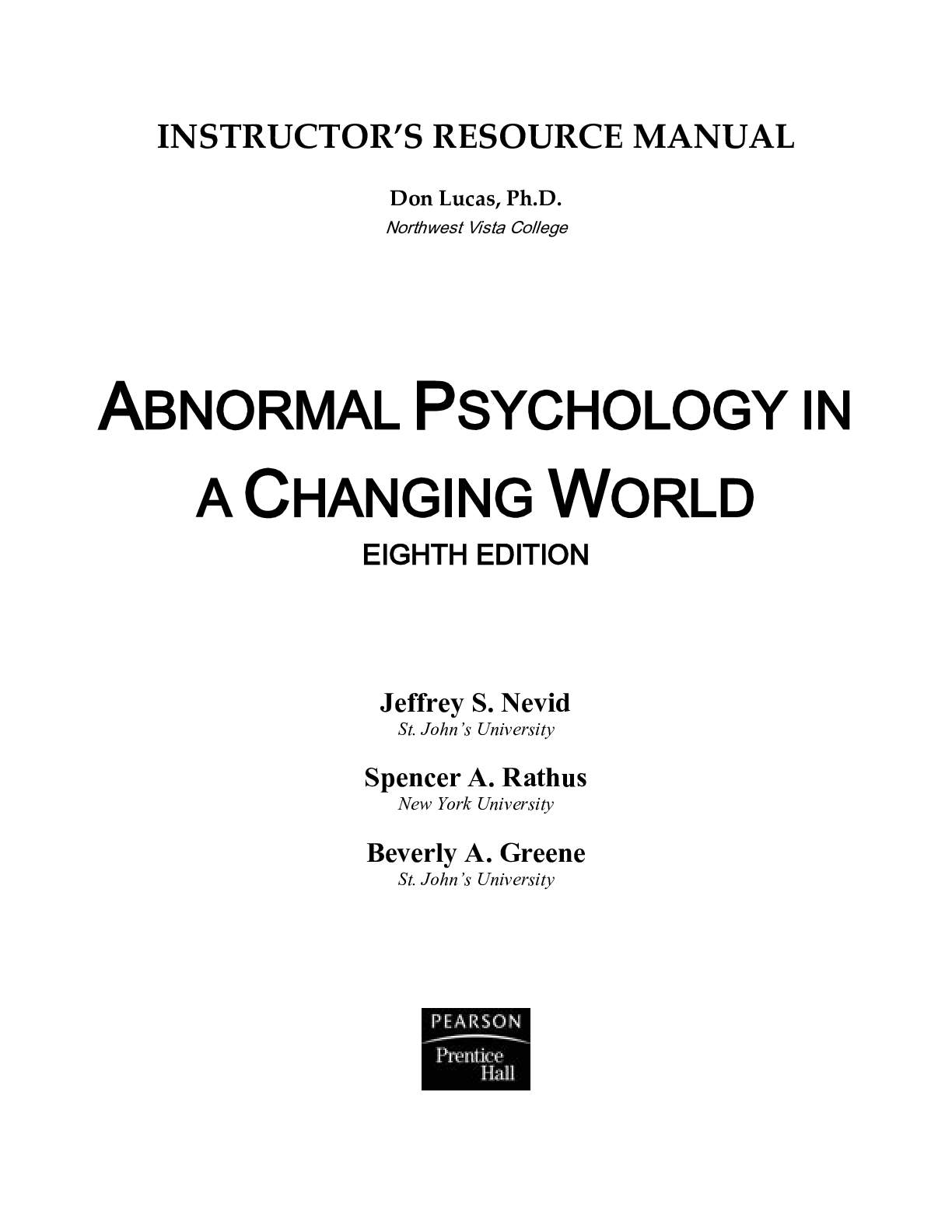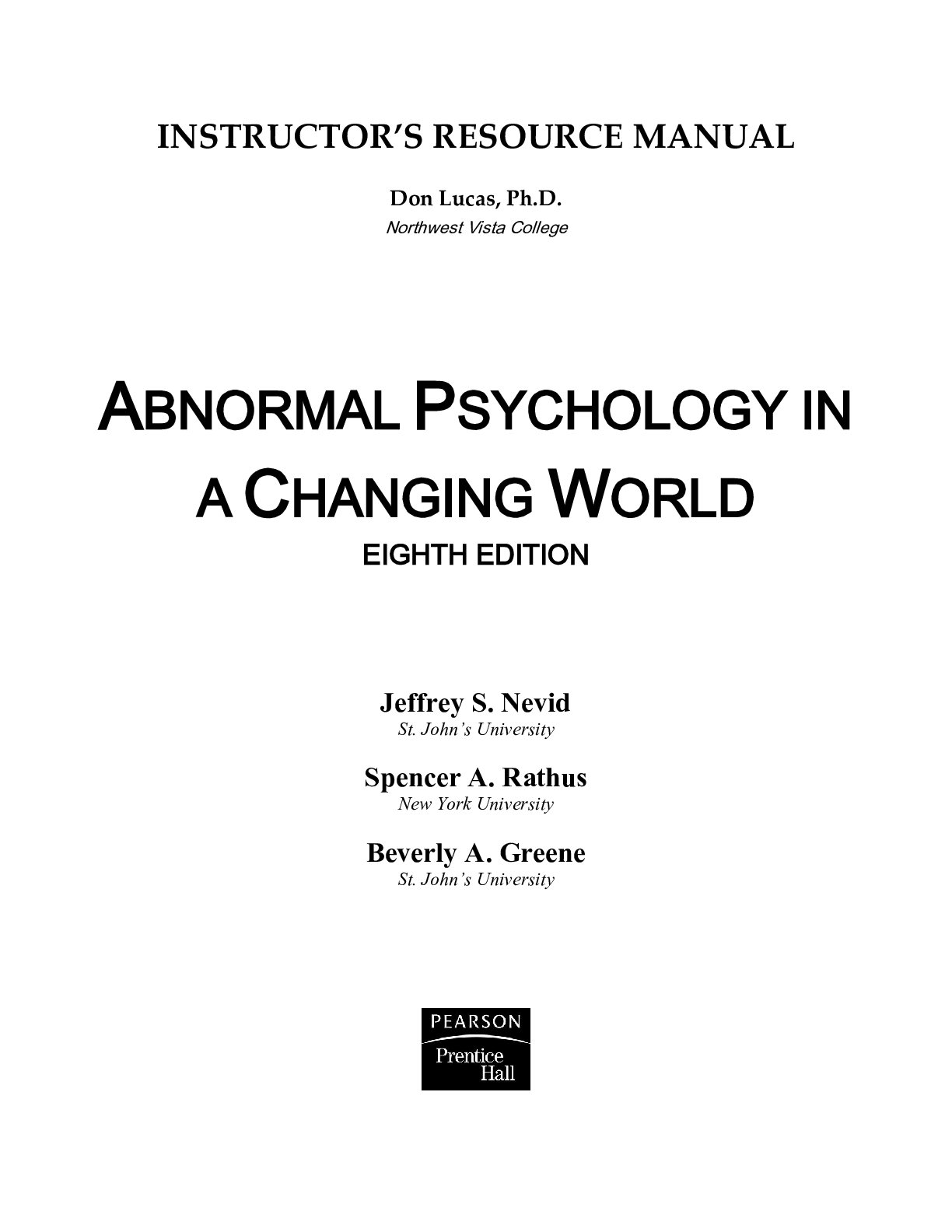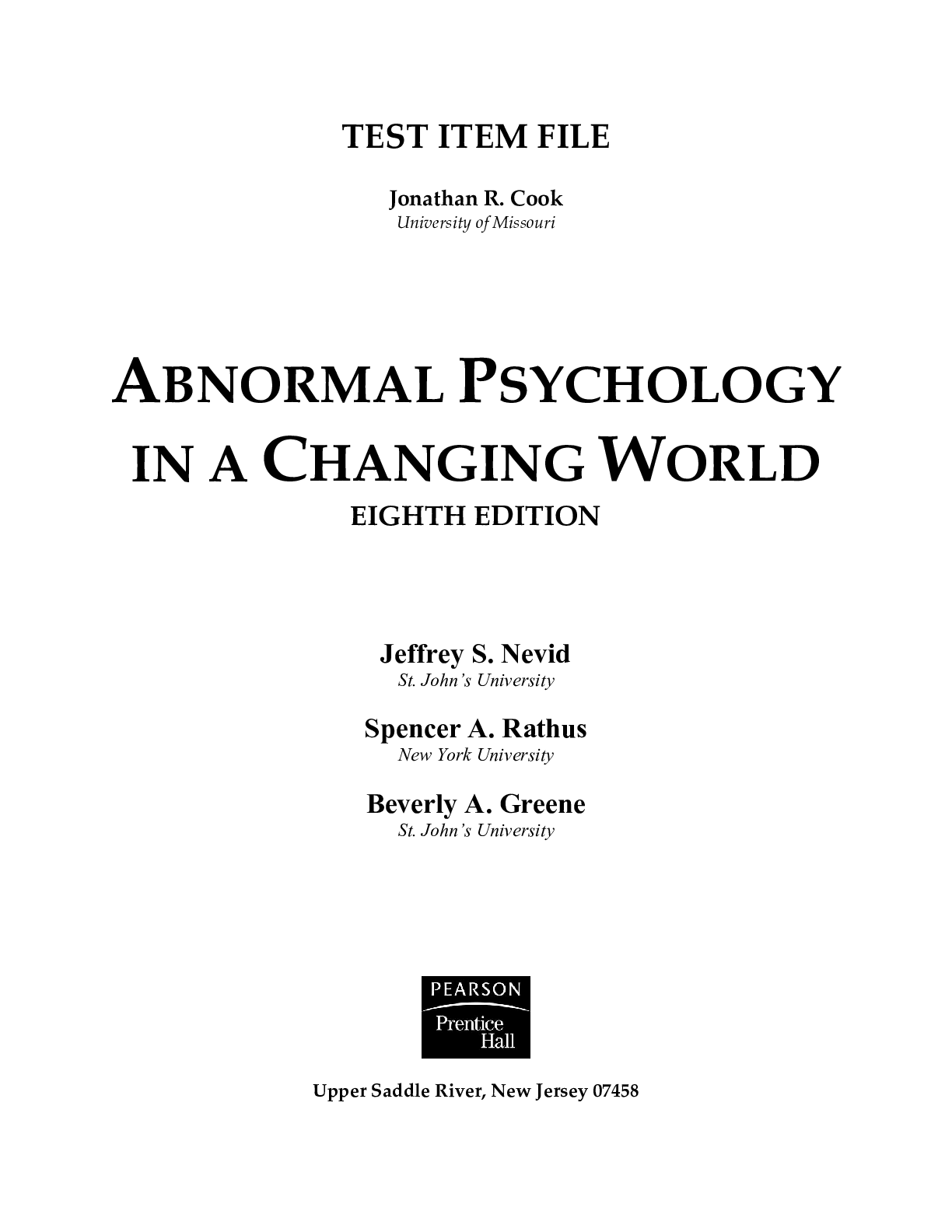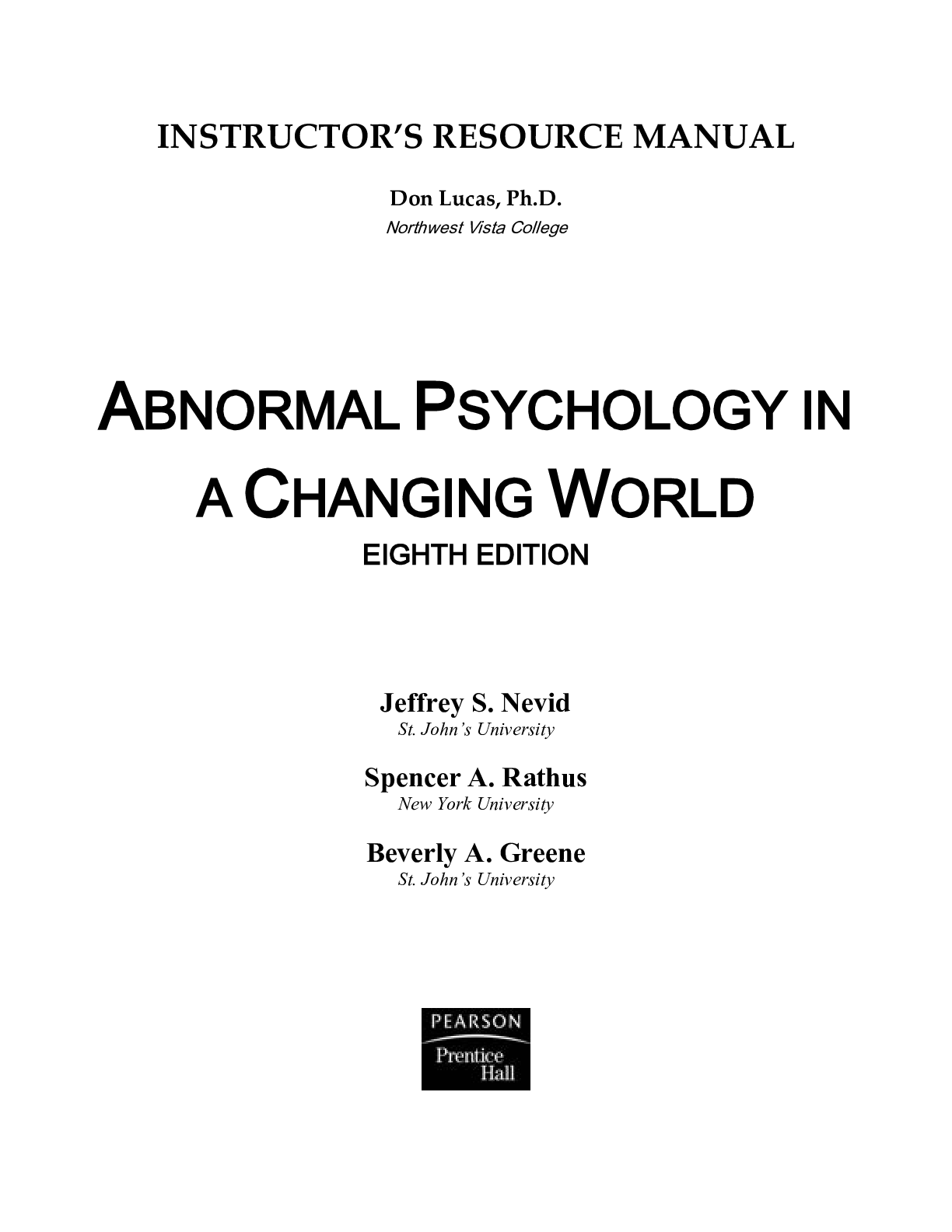Environmental Science > TEST BANKS > Scientific American Environmental Science for a Changing World, 3rd Edition Susan Karr, Anne Houtman (All)
Scientific American Environmental Science for a Changing World, 3rd Edition Susan Karr, Anne Houtman, Jeneen InterlandI Test Bank
Document Content and Description Below
MODULE 1.1 Guiding Question 1 What is the purpose and scope of environmental science? Multiple Choice 1. Environmental science does NOT rely or draw on: A. natural sciences such as ecology. B. a... pplied sciences such as engineering. C. social sciences such as anthropology. D. humanities such as literature. E. All of these choices are related to environmental science. Answer: E Section: Environmental Science Level: 1 Bloom’s Level: Remembering 2. Which example does NOT describe an environment? A. fish living in a stream B. bacteria living in a human’s intestinal tract C. mold growing on a wood stump in a forest D. a cat living in a house E. All of these choices describe an environment. Answer: E Section: Environmental Science Level: 1 Bloom’s Level: Understanding 3. Which phrase BEST describes the term environment? A. the climate where an organism lives B.t he living surroundings in which an organism exists C. the living and nonliving surroundings in which an organism exists D. the nonliving surroundings where an organism lives E. the domination of nonliving systems by living systems Answer: C Section: Environmental Science Level: 1 Bloom’s Level: Remembering 4. Which statement is TRUE of environmental science? A. It relies only on natural sciences such as ecology and geology. B. It examines only the workings of the natural world. C. It examines the natural world and our relationship to it. D. It is focused on areas without human impact. E. It focuses on the future of the Earth. Answer: C Section: Environmental Science Level: 1 Bloom’s Level: Understanding Essay 5. What does an environment include? Section: Environmental Science Level: 1 Bloom’s Level: Remembering Feedback: An environment includes the biological (living) and physical (nonliving) surroundings in which any given living organism exists. 6. What is environmental science, and what fields of study does it rely on? Section: Environmental Science Level: 1 Bloom’s Level: Remembering Feedback: Environmental science is an interdisciplinary field of research that draws on the natural (for example, ecology) and social sciences (for example, anthropology) as well as the humanities (for example, literature) in order to understand the natural world and our relationship to it. 7. Why are nonliving things included in the definition of an environment? Section: Environmental Science Level: 3 Bloom’s Level: Analyzing Feedback: Nonliving things—such as rocks, water, and oxygen—are included in the definition of an environment because although they are not living, they still have a tremendous impact on the organic beings that do live in that environment. Imagine an environment that contains several species of fish, some of which suddenly start to die off. Now let’s say this die-off is caused by the temperature of the water rising in this environment. If we didn’t consider water to be part of an environment, we would not know to test the water for the possible cause of the fish dying. Guiding Question 2 Why are both empirical and applied approaches useful in environmental science? [Show More]
Last updated: 8 months ago
Preview 1 out of 855 pages

Buy this document to get the full access instantly
Instant Download Access after purchase
Buy NowInstant download
We Accept:

Reviews( 0 )
$28.00
Can't find what you want? Try our AI powered Search
Document information
Connected school, study & course
About the document
Uploaded On
Nov 22, 2024
Number of pages
855
Written in
Additional information
This document has been written for:
Uploaded
Nov 22, 2024
Downloads
0
Views
45

















.png)
